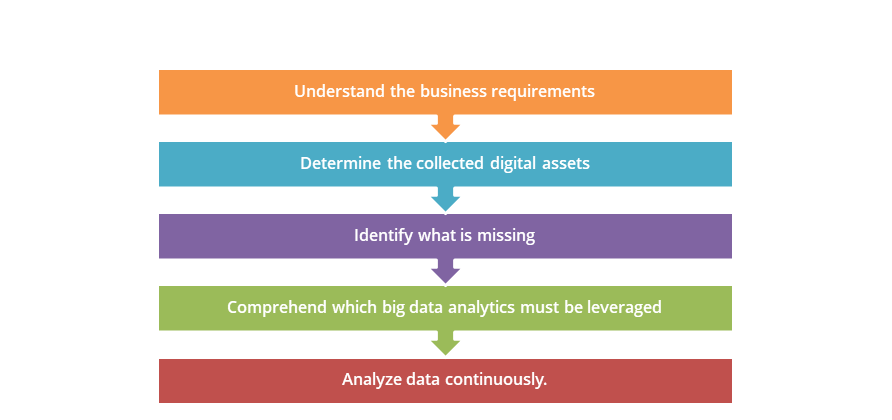Comments (2)
Vincent Smith
Powerful read !!!!
Brian Gulliver
Excellent. Simple and awesome.

Big data - the word says it all - is an enormous amount of data that gets collected and generated across organizations, social media, Internet, and various other sources.
Big data analytics analyzes the collected data and find patterns from it. The velocity, veracity, variety, and volume of data lying with organizations must be put to work to gain actionable insights out of the same. Organizations leveraging big data analytics must thoroughly understand the best practices for big data first to be able to use the most relevant data for analysis. Let’s take a look at the best practices for big data to translate data into business advantage.

Big data offers countless benefits to several industries, including healthcare, retail, finance, manufacturing, insurance, pension, and many more. But where does all this data come from? Organizations collect and generate a significant amount of data from multiple internal and external sources and it is crucial to manage this data efficiently and securely. This extensive data pouring into an organization is termed as big data. Handling such massive volumes of data with traditional methods is tedious; hence big data analysis came into existence. It is imperative to analyze digital assets in the organization thoroughly to get an insight into the effectiveness of any existing processes and practices. Big data analytics help find patterns in the collected data sets, which allows business users to identify and analyze emerging market trends. Moreover, big data analytics help various industries to find new opportunities and improve in areas where they lack.
Now, with the knowledge of what is big data and what it offers, organizations must know how analytics must be practiced to make the most of their data. The list below shows five of the best practices for big data:
Analyzing and understanding the business requirements and organizational goals is the first and the foremost step that must be carried out even before leveraging big data analytics into your projects. The business users must understand which projects in their company must use big data analytics to make maximum profit.
The second best big data practice is to identify the type of data pouring into the organization, as well as, the data generated in-house. Usually, the data collected is disorganized and in varying formats. Moreover, some data is never even exploited (read dark data), and it is essential that organizations identify this data too.
The third practice is analyzing and understanding what is missing. Once you have collected the data needed for a project, identify the additional information that might be required for that particular project and where can it come from. For instance, if you want to leverage big data analytics in your organization to understand your employee's well-being, then along with information such as login logout time, medical reports, and email reports, we need to have some additional information about the employee’s, let’s say, stress levels. This information can be provided by co-workers or leaders.
After analyzing and collecting data from different sources, it's time for the organization to understand which big data technologies, such as predictive analytics, stream analytics, data preparation, fraud detection, sentiment analysis, and so on can be best used for the current business requirements. For instance, big data analytics helps the HR team in companies for the recruitment process to identify the right talent faster by collaborating the social media and job portals using predictive and sentiment analysis.
This is the final best practice that an organization must follow when it comes to big data. You must always be aware of what data is lying with your organization and what is being done with it. Check the health of your data periodically to never miss out on any important but hidden signals in the data.
Before implementing any new technology in your organization, it is vital to have a strategy to help you get the most out of it. With adequate and accurate data at their disposal, companies must also follow the above mentioned big data practices to extract value from this data.
Powerful read !!!!
Excellent. Simple and awesome.
Naveen is the Founder and CEO of Allerin, a software solutions provider that delivers innovative and agile solutions that enable to automate, inspire and impress. He is a seasoned professional with more than 20 years of experience, with extensive experience in customizing open source products for cost optimizations of large scale IT deployment. He is currently working on Internet of Things solutions with Big Data Analytics. Naveen completed his programming qualifications in various Indian institutes.
Leave your comments
Post comment as a guest